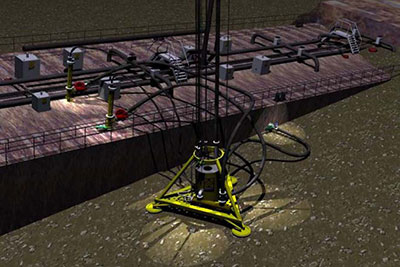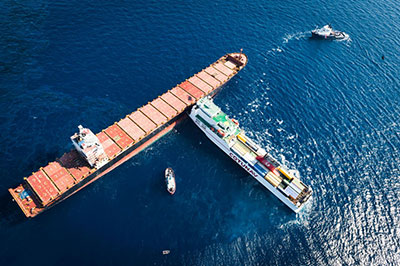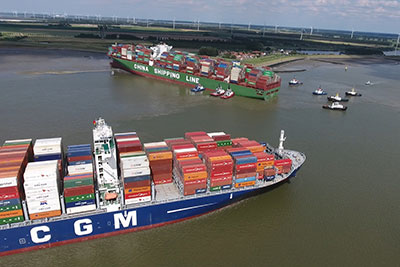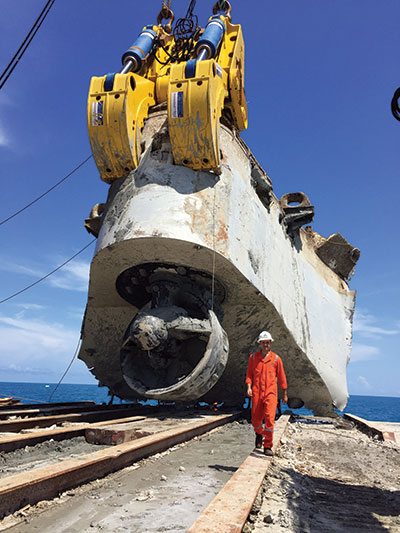Core salvage services
Protecting the environment
 ISU members are ready around the clock, globally, to provide a unique emergency service for shipowners and insurers. Salvage Masters, salvage engineers, salvage crews, divers and technical specialists are available every day of the year.
ISU members are ready around the clock, globally, to provide a unique emergency service for shipowners and insurers. Salvage Masters, salvage engineers, salvage crews, divers and technical specialists are available every day of the year.
Protecting the marine environment is critical in every salvage operation. Societal changes rightly mean there is “zero tolerance” of pollution and the focus has moved from saving of property as the salvor’s main concern to protecting the environment.
Members of the ISU invest in specialised equipment, expertise and training, to minimise environmental damage from casualties.
To find out more click here
Salvage operations
Fire/explosion
A shipboard fire is extremely dangerous and frightening. The fire may be too serious to be dealt with using the vessel’s own firefighting resources and salvage assistance will be required. Salvage tugs are equipped with powerful firefighting systems and salvage teams can include marine firefighters with access to specialist equipment. In recent years, ISU salvors have dealt with a number of very serious fires involving laden oil and chemical tankers, container ships and passenger vessels.
Collision
 Despite the many advances made in electronic navigational aids, collisions continue to occur every year, even in clear weather. In some cases, the force of the collision leaves the vessels firmly locked together. The immediate concerns include the potential for structural failure and serious pollution. The salvage priorities include damage assessment and the speedy completion of temporary patching and other emergency repairs, in readiness for a tow to a place of refuge for assessment and further repair.
Despite the many advances made in electronic navigational aids, collisions continue to occur every year, even in clear weather. In some cases, the force of the collision leaves the vessels firmly locked together. The immediate concerns include the potential for structural failure and serious pollution. The salvage priorities include damage assessment and the speedy completion of temporary patching and other emergency repairs, in readiness for a tow to a place of refuge for assessment and further repair.
Grounding
Groundings are the second largest cause of marine casualties after machinery breakdowns. Some groundings occur in areas of great environmental sensitivity. The salvage team must make a rapid assessment of the casualty’s condition and the potential for refloating without further hull damage and loss of cargo. In some instances it is necessary to discharge all, or part, of the cargo, in order to free the ship. Much depends on the nature of the grounding site, the extent to which the hull is aground, the degree of damage and a wide range of other operational factors, especially the weather. A forecast deterioration in the weather can have a major influence on the salvage strategy adopted.
Breakdowns
Machinery breakdowns are a cause of a marine casualty but are less frequent than in past decades. However, every year salvage tugs go to the assistance of vessels left helpless after a major failure of propulsion or steering systems. Even if there is no imminent danger there is the eventual possibility of an immobilised vessel grounding if no assistance is provided.
Facilitating world trade
 90% of world trade moves by sea, bringing raw materials to manufacturing countries, consumer goods to markets and vital energy resources to where they are needed. As supply chains have become more sophisticated and lead times shortened, any disruption to shipping can have a major impact far beyond the immediate incident.
90% of world trade moves by sea, bringing raw materials to manufacturing countries, consumer goods to markets and vital energy resources to where they are needed. As supply chains have become more sophisticated and lead times shortened, any disruption to shipping can have a major impact far beyond the immediate incident.
Individual vessels which become a casualty will interrupt the flow of goods and services and, as well as the physical risk to the property on board, can cause a significant break in business continuity.
A vessel damaged in port or blocking access can cause issues not only for the casualty but consequential loss for other ships and the port.
ISU members work with their clients to mitigate risk and, should the worst happen, to reduce loss. Rapid intervention and professional salvage services can help to minimise disruption and keep trade flowing.
Project management
 ISU members are expert project managers dealing with highly complex projects like the removal of large wrecks.
ISU members are expert project managers dealing with highly complex projects like the removal of large wrecks.
The majority of coastal states require a wrecked vessel to be removed – particularly if it is a threat to the environment or a hazard to navigation. The shipowner and the liability insurers pay for the removal.
ISU members have the expertise and heavy equipment required to undertake the most complex of wreck removal operations. These essential services include dealing with the aftermath of marine disasters, removing pollution threats and clearing hazards to navigation.
Wreck removals usually require the mobilisation of some of the heaviest units in the world salvage fleet, including floating sheerlegs and cranes, pullbarges and an array of specialised equipment. Complicated engineering and sophisticated project management are required.
During the period 2000-2018, ISU salvors performed over 1,500 wreck removal operations Wreck removal revenue has become a major source of revenue for ISU members, accounting for some 50% of all gross revenues.
The cost and complexity of the largest wreck removals has increased in recent years. The International Group of P&I Clubs has noted that the major cause of the increase in cost is the increasing demands of national authorities. These demands were very apparent during the wreck removal of the Costa Concordia off Italy.
It significantly raised the profile of the international marine salvage industry and set new standards for technical competence in wreck removal operations. Running concurrently was the wreck removal of the container ship, Rena, off the North Island of New Zealand, a technically challenging project due to its exposed location.
Standard contracts for wreck removal
ISU and the International Group of P&I Clubs, under the stewardship of BIMCO, was heavily involved in the development of a series of standard contracts for the performance of wreck removal services. First introduced in 1999, the BIMCO WRECKFIXED, WRECKSTAGE and WRECKHIRE contracts were revised and updated in 2010. These contracts are in common and widespread use and provide a model for the negotiation of contracts which balance the interests of all parties involved in a wreck removal operation.
Wreck Removal Code of Practice
The ISU and the International Group of P&I Clubs are parties to a Code of Practice for wreck removal/cargo recovery operations. The P&I Clubs are responsible for shipowners’ third party liabilities, including wreck removal obligations and pollution-related claims. This Code, amongst other things, sets out formal procedures for tendering for wreck removal projects.
Nairobi Wreck Removal Convention 2007
The ISU participated in the International Maritime Organization’s work to develop a new International Convention on Wreck Removal adopted by IMO member governments at a diplomatic conference in Nairobi in May 2007. It entered into force in April 2015 and extends the powers of Coastal States to take action to remove wrecks posing environmental and navigational hazards in their Exclusive Economic Zone with the option to include their territorial waters which usually extend to the 3-mile limit.